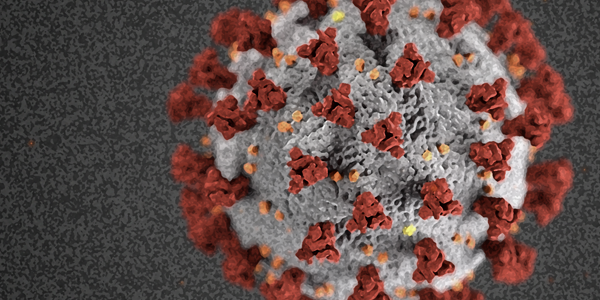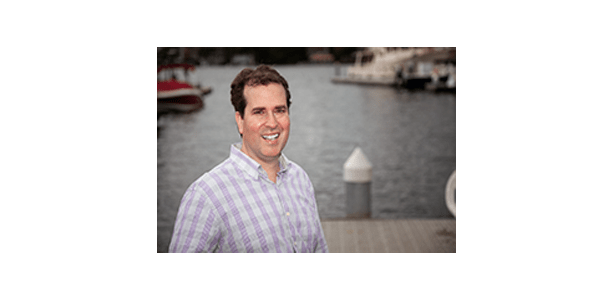Research Assistant Professor
gianluca@u.washington.edu
Phone: (206)685-4435
Office: Foege N430 E

Gianluca Interlandi
Hemostasis and thrombosis
Molecular dynamics simulations
Monte Carlo simulations
Protein biophysics
Protein dynamics and allostery
Bacterial infection
Biochemically, oxidation leads to the conversion of methionine residues to methionine sulfoxide. My research aims at understanding how this conversion affects the structure and function of key coagulation factors explaining their increased thrombotic activity. Insights gained onto the structural mechanism of coagulation factors can help structure based drug design to find therapeutics that can treat thrombotic diseases without causing life threatening bleeding.
Pathological blood clots can often be caused by biomedical devices implanted in the body. For this reason, I am interested in studying the interaction between proteins and material surfaces using a combination of Monte Carlo and molecular dynamics simulations. Other side projects include studying the allosteric regulation and binding properties of adhesive proteins present in bacterial fimbria.
BS+MS, Physics, ETH Zürich, Switzerland, 2000
2007 – American Heart Association postdoctoral fellowship
2005 – Swiss Science National Foundation postdoctoral fellowship
Interlandi G, Thomas WE; Mechanism of allosteric propagation across a beta-sheet structure investigated by molecular dynamics simulations; Proteins; 84(7), 990-1008 (2016)
Rodriguez VB*, Kidd BA*, Interlandi G, Tchesnokova V, Sokurenko EV, Thomas WE; Allosteric coupling in the bacterial adhesive protein FimH; J Biol Chem, 288(33), 24128- 24139 (2013)
Liu Y, Esser L, Interlandi G, Kisiela DI, Tchesnokova V, Thomas WE, Sokurenko E, Xia D, Savarino SJ; Tight conformational coupling between the domains of the enterotoxigenic Escherichia coli fimbrial adhesin CfaE regulates binding state transition; J Biol Chem, 288(14), 9993-10001 (2013)
Interlandi G, Ling M, Tu AY, Chung DW, Thomas WE; Structural basis of type 2A von Willebrand disease investigated by molecular dynamics simulations and experiments; PLoS One; 7(10), e45207 (2012)
Yagi M, Murray J, Strand K, Blystone S, Interlandi G, Suda Y, Sobel M; Heparin modulates the conformation and signaling of platelet integrin alphaIIbbeta3; Thromb Res; 129(6), 743-749 (2012)
Baio JE, Weidner T, Interlandi G, Mendoza-Barrera C, Canavan HE, Michel R, Castner DG; Probing Albumin Adsorption onto Calcium Phosphates by XPS and ToF-SIMS; J Vac Sci Technol B Microelectron Nanometer Struct Process Meas Phenom; 29(4), 4D113 (2011)
Aprikian P*, Interlandi G*, Kidd BA, Le Trong I, Tchesnokova V, Yakovenko O, Whitfield MJ, Bullitt E, Stenkamp RE, Thomas WE, Sokurenko EV; The bacterial fimbrial tip acts as a mechanical force sensor; PLoS Biol; 9(5), e1000617
(2011)
Interlandi G, Thomas W; The catch bond mechanism between von Willebrand factor and platelet surface receptors investigated by molecular dynamics simulations; Proteins; 78(11), 2506-2522 (2010)
Le Trong I, Aprikian P, Kidd BA, Forero-Shelton M, Tchesnokova V, Rajagopal P, Rodriguez V, Interlandi G, Klevit R, Vogel V, Stenkamp RE, Sokurenko EV, Thomas WE; Structural basis for mechanical force regulation of the adhesin FimH via finger trap- like beta sheet twisting; Cell; 141(4), 645-655 (2010)
Interlandi G; Backbone conformations and side chain flexibility of two somatostatin mimics investigated by molecular dynamics simulations; Proteins; 75(3), 659-670 (2009)
Interlandi G*, Wetzel SK*, Settanni G, Plückthun A, Caflisch A; Characterization and further stabilization of designed ankyrin repeat proteins by combining molecular dynamics simulations and experiments; J Mol Biol; 375(3), 837-54 (2008)
Interlandi G, Settanni G, Caflisch A; Unfolding transition state and intermediates of the tumor suppressor p16INK4a investigated by molecular dynamics simulations; Proteins; 64(1), 178-92 (2006)
In the News
UW Bioengineers pivot to develop coronavirus solutions
2022-08-01T14:43:01-07:00July 9th, 2020|
Shear force: new hire Gianluca Interlandi seeks to unlock the secrets of blood clotting
2020-10-26T08:30:46-07:00December 15th, 2014|
Barry Lutz starts tenure-track position, Gianluca Interlandi joins faculty and Suzie Pun is promoted to full professor
2020-10-26T08:31:24-07:00September 9th, 2014|





